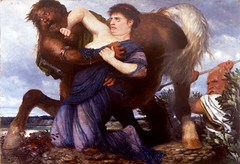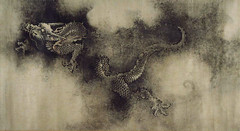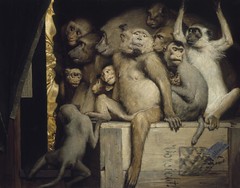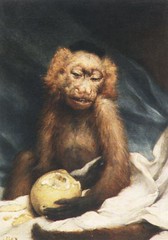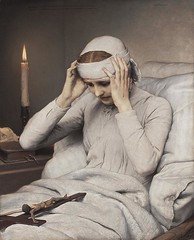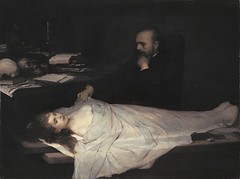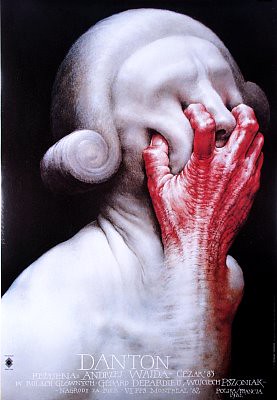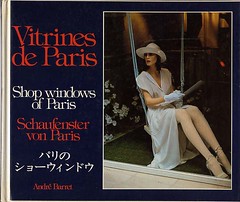Nessus rapes Deianeira (1898) by Arnold Böcklin.
Arnold Böcklin (16 October 1827 – 16 January 1901) was a Swiss painter known for his grotesquely comic work. His best known painting is the macabre The Isle of the Dead. Most recently his work has been celebrated at the German traveling exhibition Comic Grotesque. He was born 180 years ago tomorrow.
I’ve always considered the ambivalence of the grotesque an essentially Western sensibility but I guess I’m wrong if you consider the work of Yue Minjun (Googe gallery) Yue Minjun is an artist based in Beijing working in painting and sculpture. His style is ambiguous in that it is very Chinese, yet at the same time very Western, and very political, satirical and humorous to the point of the grotesque. Last Friday, his painting “Execution” became the most expensive work sold by a Chinese contemporary artist.
As further ‘proof’ that the grotesque and fantastique (two very related sensibilities, in the sense that they both rely on ambiguity at their core), there is the anthology of stories Strange Tales from a Chinese Studio, which Franz Kafka described as “exquisite” and the painting below:
One of the dragons from The Nine Dragons handscroll , painted by the Song Dynasty Chinese artist Chen Rong in the year 1244.
Tip of the hat to Doms.

